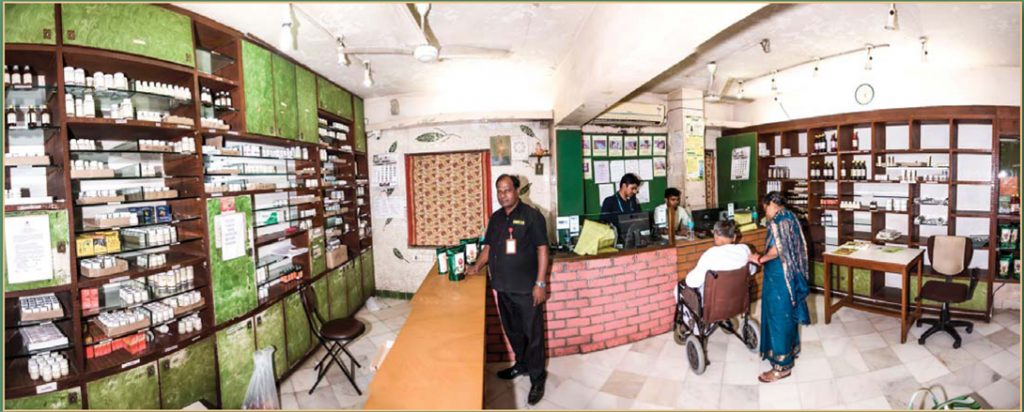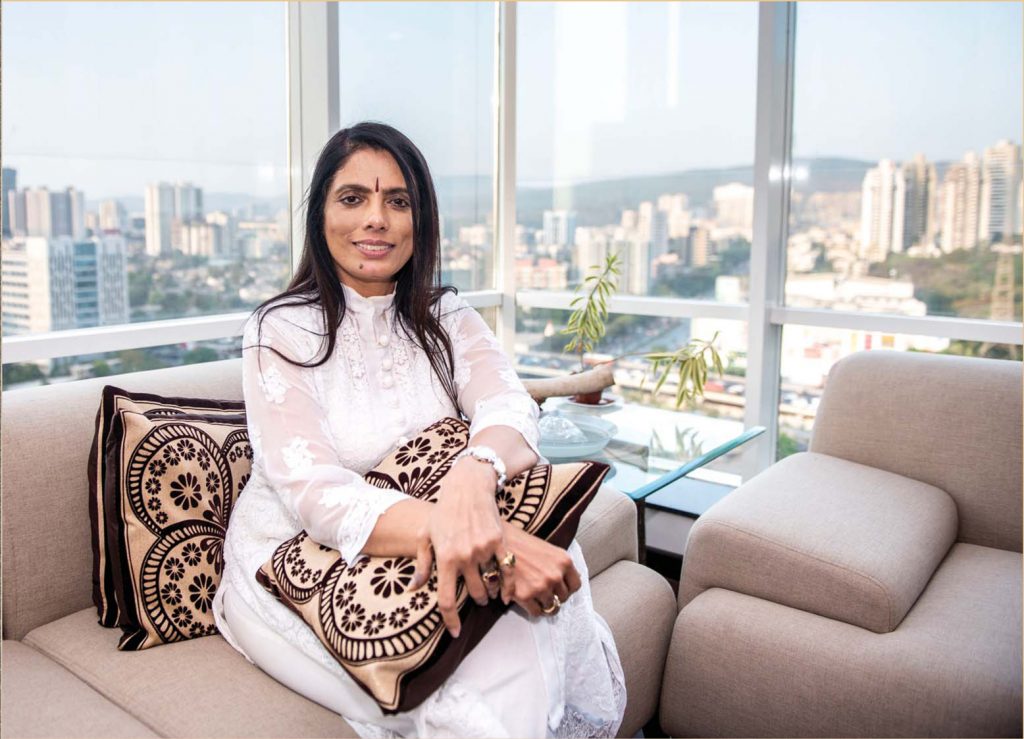
Dr. Smita Naram in her Mumbai headquarters
AYURVEDA, “LIFE SCIENCE,” IS INDIA’S ANCIENT medical system, referenced in many old texts and dealt with extensively in scriptures attached to the Atharva Veda. It has informed modern medicine, particularly in the areas of surgery and vaccinations, but is today eclipsed even in India by a reliance on the allopathic approach. Yet ayurveda is gaining considerable credibility in tackling the multitude of lifestyle diseases people suffer from today—diseases whose causes can be found in diet, mode of living and environmental pollution. In the forefront of ayurveda’s resurgence are skilled vaidyas (practitioners), mostly in India, who are tackling these new diseases with a combination of insightful diagnosis based on pulse reading and the use of a multitude of traditional herbs. Among the foremost of these innovative medical traditionalists is the charismatic Dr. Smita Naram, whose Ayushakti clinic in Mumbai we explore in this detailed report by our Delhi correspondent and test subject.

BY RAJIV MALIK, MUMBAI
FOR MANY CENTURIES OUR MOTHERS and grandmothers in India had ready home remedies, no further away than the garden or the kitchen spice shelf, for the common illnesses. When I was a child, my parents told me that good health meant striking a balance between the three physiological components of the body described in ayurveda: vata, wind; pitta, heat; and kapha, mucus. Today, in the face of intractable diseases brought on by our modern lifestyle and diet, ayurveda is getting a serious second look and enjoying growing popularity in India. This is seen in the ministry, now called AYUSH, that the Indian government formed in 1995 to promote ayurveda, yoga and naturopathy, Unani, Siddha and homeopathy—all somewhat condescendingly labeled “alternative medicines” in the West. It is seen in the great success of Baba Ramdas’ Patanjali line of medicines as well as the growth of ayurvedic clinics and spas across India and, to some extent, in Europe and the Americas as well.
Our interest for this article is not the five-star hotels and resorts that offer programs for relaxation and rejuvenation; rather it is the clinics intended to diagnose and treat chronic illness. We looked into several of these in Kerala, a state known for both five-star programs and well-respected clinics. Ultimately, we settled upon the well-known Ayushakti clinic in Mumbai, in large part because several of our readers recommended it after taking treatments there themselves.
Dr. Smita Naram, the head of the clinic, was already familiar with HINDUISM TODAY and willingly agreed to admit myself and my wife, Renu, for three weeks of treatment at one of the 32 clinics they have in Mumbai and Delhi. In addition to these facilities, they have or plan to have 60 alliance partners trained by them who practice in Europe, UK, US, Australia and New Zealand. Dr. Naram herself travels to other countries, for example, holding clinics in the US in Sept/Oct, 2018.
During our course of treatment, I was granted access to Dr. Naram and the clinic’s other doctors and therapists. I was also given a tour of the Mumbai plant where most of their herbal medicines are produced. The arrangement was a bit unusual: as a patient, I should really have been relaxing and focusing on absorbing the treatments. But I was also in reporter mode, attending to interviews and photo shoots in the midst of everything else. But the staff were all good-natured about it, tolerant of the occasional inconvenience I caused and happy to share their knowledge and insights.
Our report covers the personal treatments for Renu and myself as a real-life example of ayurveda’s approach to illness, in the process explaining the various modalities employed for both diagnosis and treatment. By far the most informative part of our stay was an hour-long interview with Dr. Naram, a modern-day incarnation of Sushruta, the 6th-century-bce founder of ayurveda. It is her grand vision to create a large network of clinics that apply ayurveda’s fundamentals to the diseases and afflictions that accompany our modern life. We begin our report with her interview.
Dr. Naram, Ayushakti’s Guiding Light
About a week into our stay, I interviewed Smita in her 15th-floor office in the Synergy Business Park building in Goregaon East, just a few kilometers from the clinic we stayed at.
Renu and I found her a spiritually elevated person with a magnetic personality, obviously in excellent health herself. In a freewheeling interview covering her life in detail, dreams, vision and mission related to Ayushakti, Dr. Naram shared that she has personally examined the pulse of over 300,000 patients in the past 30 years. She claims that through the pulse examination she can scan the whole body of the patient in less than a minute. Wanting to extend the benefits of pulse reading and ayurveda to millions of people and realizing she could not do so alone, she decided to build a team of ayurvedic practitioners to help her achieve her goal of touching and transforming the lives of millions over the next 30 years.
Her husband and business partner, Dr. Pankaj Naram, was not comfortable with this plan to train other vaidyas as expert pulse readers on a huge scale. However, she was so steadfast with her mission to touch one billion lives through a team of vaidyas that they mutually agreed that she should assume full control of Ayushakti. She hired Chiranjeev Shrivastava, a marketing expert, as CEO; and since then, she told us, the company has made tremendous progress and never looked back.
Four generations in Dr. Naram’s family have been ayurvedic doctors. She learned the value of ayurveda early in life when she suffered severe stomach pain and was advised she had appendicitis and needed surgery. Her uncle prescribed a simple ayurvedic concoction which cured her. She completed formal ayurveda study in 1981. Then, she and her husband learned advanced pulse reading under the guidance of Ramdas Babaji, a 120-year-old ayurveda master. Dr. Naram also obtained a degree in pharmacology and has set up two plants for producing ayurvedic medicines with her own formulations. Her particular lineage within ayurveda traces back to Amogh Patra, who taught at Nalanda University, which was destroyed by Muslim armies in 1200ce. This lineage emphasizes detoxification of the body, followed by rejuvenative medicines.
According to Dr. Naram, faulty lifestyle and improper diet are behind many diseases today. She joked that Ayushakti will keep doing a roaring business as long as there are sellers and buyers of junk food in such large numbers worldwide.
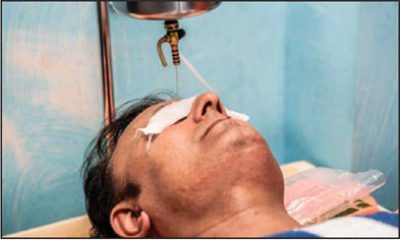
“Ayushakti is frequented by people who need to cure a serious disease,” she said. “People do think of Kerala in the context of ayurveda, but there it has been popularized as a tourist activity for relaxation. We ourselves started a branch for the purpose of relaxation in the Bandra area of Mumbai, which is patronized by film stars and those belonging to high society. But most of our clinics are outpatient ones, where people come during the day for detoxification sessions.”
Ayushakti specializes in pain management, diabetes, high cholesterol, high blood pressure, arthritis, obesity, liver disease, irritable bowel syndrome, thyroid, rheumatoid arthritis, autoimmune disease and other ailments, including cancer. Dr. Naram explained that various theories, including the overuse of antibiotics, are presented to explain the increase of autoimmune diseases in the last 20 years. She described how autoimmune diseases can be dealt with through ayurveda, sometimes in conjunction with allopathic medicines.
She made it clear she is not opposed to allopathic medicines, but believes the majority of ailments we face can be cured with the help of the type of ayurvedic home remedies given in her book, Your Health In Your Hands. But most people don’t try these herbal remedies and resort to allopathic drugs, many of which have negative side effects.
No doubt, she agreed, we need allopathic treatment if we have an accident or if we have severe asthma and suffer an attack. But if we take ayurvedic treatment for three to six months, she explained, we may not face any asthma-related problems for years, because ayurveda has rooted out the cause.
Ayurveda, she told us, was originally systematized by Charaka Muni in the Charaka Samhita, dated between 1500 and 2000 bce. While many diseases mentioned in that text are not common today, there are chapters dealing with cough, arthritis and skin disease. Comparatively little is said about stress and mental disorders—prevalent problems today—though there is a full chapter on psychosomatic disease and how to deal with it. For each disease, the cause is discussed at length and cures are recommended.
“Today,” Dr. Naram pointed out, “we are exposed to environmental pollution in a very big way. We also consume fertilizers and pesticides though our food. The result, my husband and I observed 30 years ago, is that people have a very high level of pita or heat in the body.”
The clinic works with patients in six ways: diet, intake of herbs, detoxification, kitchen remedies and marma points (related to acupuncture points). They also encourage meditation, faith in God and seeking the company of realized gurus.
We asked specifically about autism, which is causing so much grief in the West. “It is difficult to understand from the point of view of allopathy what causes autism. Based on pulse reading, I have observed that when the immune system is attacked, the nervous system gets inflamed and the impulses of the brain do not pass on to the senses. Intelligence is there, but there is an inability to express. We feel that taking high levels of medication during pregnancy can be a cause, as can smoking, drinking and consumption of tamasic food—meat and food that is highly processed or fermented, frozen or canned. Westerners take to such a diet in a big way. Now nonresident Indians do also, and their children are suffering from autism.”
Dr. Naram’s focus is on the future: “I love interacting with patients, but I am no longer taking on new patients. Instead, I focus on training doctors and expanding our network of clinics. The doctors who graduate from ayurvedic colleges have academic knowledge but no clinical experience. Allopathy is more systematic in providing practical training. Training new doctors in nadi parikshan, pulse reading, is akin to teaching one to swim. No matter how much one reads or is told, one cannot just jump into a pool and swim. In the same way, doctors working with mentors slowly develop their own insights by experience. Through pulse reading, we can scan the body and ascertain a person’s medical history. We can sense a disease the person may be suffering from or is likely to suffer from in the future. Blood and other laboratory tests may be done to confirm our findings. It is the pulse reading that reveals the root cause and how to fix it.”
“For some people we just suggest dietary and lifestyle changes; others are so deeply immersed in their illness that they required deep detoxification. Still others have no disease as such, but want to feel good and live in a healthy manner. Indians are more aware than Westerners, I have observed, of the need to take preventive measures. I myself go through the entire process of detoxification every two years. Otherwise, I would not have the high level of energy to do so much work.”
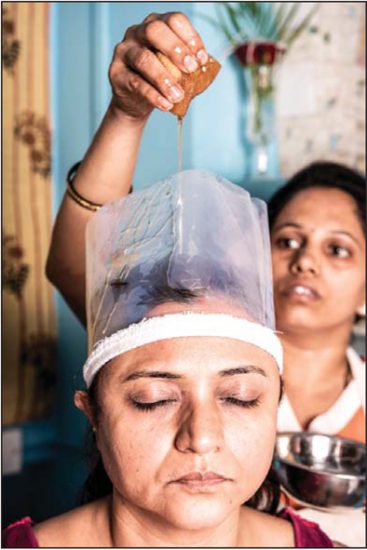
Asked about her daily routine, she explained, “I’m up at 7am and to bed by 11pm. In the evening, as soon as I step into my house, my office is closed. Work is closed. My son and I spend a wonderful time with each other talking about our day and the difficulties we faced. Once I am home, I am a woman. I am a wife and a mother. It is essential to be like that.”
We concluded the interview, impressed with Dr. Naram and her vision. Let us now back up a bit to how we came to be at the Ayushakti clinic.
Treatment
HINDUISM TODAY is aware of several ayurvedic clinics in India that have achieved renown for their successful treatment programs, Ayushakti among them. A three-week detoxification plan was booked for myself and my wife at a cost of US$3,650. We soon received a 19-page document, Panchakarma at Ayushakti, detailing the advance preparations we should make (mostly to eat lightly), what to expect during the three weeks and what to do upon our return.
First the booklet defines the panchakarma, literally, five actions, which form the basis of treatment by reducing ama, toxins, in the body (see page 21 sidebar). It then describes various specialized treatments given to assist in the reduction of ama. These include abhyanga, full-body oil massage by two therapists working in sync; swedana, sitting in a steam cabinet; pind swed, a form of massage with heated herbs; and various applications of oil, including shirodhara, in which warm oil is poured continuously on the forehead for half an hour.
One’s diet is strictly controlled throughout the stay at the clinic. The chef at the in-house restaurant is informed of what each patient should be eating and cooks accordingly. One is strongly encouraged to control one’s diet upon return home, avoiding wheat, meat, heavy milk products, fried food, sweets, etc., in favor of mung and vegetable soups and stews, khichadi, rice, fruits, etc. The booklet stresses that by following the directions given before joining the program, you will have started preparing your body, mind and emotions to release as many toxins, blocks and impurities as possible—toxins that have been accumulating in your system over the years. Further, unless the body is made open, soft and flexible by the treatments and remedies during the preparation phase, it is impossible to release and expel the toxins without harming one’s system. I have undergone many medical treatments and some small surgeries in my 60 years of life, but no doctor ever gave me such comprehensive directions on diet and lifestyle.
Hoping we had prepared well enough, we flew to Mumbai on May 2, checked in at Ayushakti and had dinner at the clinic’s Swadshakti restaurant, which we learned is famous for its authentic ayurvedic cuisine.
The clinic occupies a four-story building surrounded by trees in the Malad area of North Mumbai. A large hall in the basement is used for yoga classes and training sessions; the outpatient clinic is on the first floor. We stayed on the third floor, which has six rooms for in-house patients. The rooms are air-conditioned—a necessity at this off-season time of year, when it is quite hot and humid in Mumbai.
In the morning, we met with Dr. Rajshree Mehta, one of the clinic’s senior physicians, and Dr. Deepti Dalvi, who assists her. They took our detailed history, blood pressure, weight, etc., and did a preliminary pulse reading. I had been suffering from an unstable stomach, asthmatic cough, high blood pressure, high cholesterol and chronic back and shoulder pain—most all a result of my admittedly sedentary lifestyle. My wife Renu had experienced irregular menstruation for the last four years as part of menopause and, during the visit, excessive bleeding problems—a condition which concerned the doctors. She was also experiencing depression, low blood pressure and several other maladies. Both of us were regularly taking medications for some of these conditions.
While the outpatient department normally gets 50 to 100 patients a day, today it overflowed with people coming to see Dr. Naram, who visits this clinic just few times each month. When our turn comes, she welcomed us warmly and expressed her high regard for HINDUISM TODAY, which she reads regularly. Before reading my pulse, she asked me to remove my spectacles (which somehow interfere with the reading). She told me my pitta is very high, and correctly listed many small health issues I face. Finally she noted that I suffered low back problems 16 or 17 years ago with the L4-L5 discs (something I had not mentioned). She warned that it could flare up again.
I offered up my sedentary lifestyle and advancing age as reasons for my ailments. She countered, with a smile, that she is age 55, fit enough to dance an hour a day to keep in shape and that I should not blame my age for my health problems! She added that I am managing fairly well on account of a vegetarian diet and being engaged in the religious work of HINDUISM TODAY magazine.
Renu’s turn was next. She described her ailments to Dr. Naram. After examining her pulse, Dr. Naram asked if Renu had been examined for uterine fibroids or ovarian cysts. She added that Renu had undergone stomach surgery some time back—something Renu herself could not remember until I reminded her of the operation, which took place 25 years ago. Dr. Naram expressed concern that Renu could face severe arthritis in the future.
Between the detection of my back issues and Renu’s forgotten stomach surgery, we were impressed indeed with pulse diagnosis. Following Dr. Naram’s recommendation, Renu had an ultrasound done which revealed fibroids and cysts—both common causes of excessive bleeding during menopause. We felt assured that we were in the right place and under the wings of a great and gifted physician. Dr. Naram then directed her team in detail as to the medicines, therapies and specific diet to be provided us by Dr. Mehta and Dr. Dalvi. Thereafter, we met with these two on a daily basis and only saw Dr. Naram again for our magazine interview, as already reported.
We then settled into three weeks of residence, with treatments about three hours a day. My two main therapies were virechan (laxatives) and basti (enemas); Renu’s were basti and vaman (induced vomiting). None of these, we must admit, was pleasant to experience. Our other treatments—various dharas (treatment with oil), massages and use of the steam cabinet—were often quite relaxing. We were each given many pills to take twice daily—15 in my case, 19 in Renu’s. These were Ayushakti products, variously formulated for digestion, blood circulation, cough, increased immunity, calmness of mind and reduction of vata (wind) and pita (heat). Several provided to Renu were to address her bleeding. Our two doctors continuously monitored and adjusted our treatment regime throughout the period. All the while, I conducted interviews with the doctors, therapists, other staff and patients, which we I will now recount before summarizing our stay.
Staff Interviews
Chiranjeev Srivastava, CEO of Ayushakti. Srivastava, age 38, came to Ayushakti at the invitation of Dr. Naram when she had only six clinics. His previous employer was Ogilvy, the famed advertising firm who created the “Incredible India” ad campaign. Srivastava had no background in ayurveda, but was a quick study; he is now a devoted proponent. He readily identified Ayushakti’s strong point, its holistic approach. Most people, he explained, are focused on traditional home remedies and popular ayurvedic medicines, but remain unaware of the importance of diet and the effectiveness of the panchakarma treatment.
The marketing challenge, as Srivastava analyzed it, is that people today will not take 28 days to go through a standard panchakarma program. “My logic,” he stated, “said that if my thirst is completely satisfied by drinking one glass of water, then perhaps by drinking one-quarter it will be partially satisfied, and half a glass will satisfy some more and so on.” This is how they came up with their Detox programs: Smart Detox for seven days, Dynamic for 15, Power for 22 and Super for a month, costing respectively US$100, $260, $440 and $580. This is working well for them. As people experience results with the short programs, they set aside the time for a longer one and get even better results. Ayushakti is also developing programs for specific ailments, including arthritis and asthma.
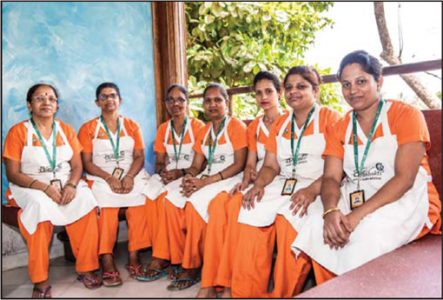
Speaking like the great promoter that he is, Srivastava extolled panchakarma: “It is an ancient procedure; it’s not something recently invented. It is one of the greatest gifts to mankind because it works wonders for people. To market it you have to make people understand this is the best thing for them. Once they experience it and get results, then the growth is organic because it generates referrals, which are very important in the healthcare industry.” He undergoes a few weeks of detoxification himself every year to maintain high energy and stamina throughout the year.
Ayushakti now has 21 clinics in Mumbai, each with about 1,000 square feet of space with four outpatient examining rooms and three therapy rooms. They are exploring a franchise model that he feels could add 200 clinics running on the Ayushakti principles over the next three to four years.
Definitely there are challenges in getting people fully engaged in the program. In particular, I told him, I was not comfortable with the basti treatment. He agreed that basti is difficult for some patients to accept, especially men. But, he said, “It cleans the system in a much faster way than what can be done through giving medicines orally. Initially, people have reservations, but eventually they understand the benefits.”
Changing a patient’s diet is another challenge, and they work slowly with people who are not yet vegetarians. They encounter diabetics who refuse to give up rice, which has the same impact on them as sugar. “One method,” he explained, “is to tell them, ‘fine, eat half a cup of rice, but then you must walk for half an hour.’ The patient realizes that if they cannot walk for half an hour, then better not eat rice. We have to understand that we are not only dealing with bodies but with the mindset of patients. Every medical doctor is supposed to be a good psychologist also.”
“I believe in the value of the Detox programs; that’s why I do it every year. Sometimes I come to the clinic, and sometimes I have the therapist come to my home. I’m also a hard-core fitness freak and spend time at the gym.”
“I am a believer in Bhagavad Gita and Lord Ganesha. I start every meeting with ‘Om Shri Ganeshaya Namaha.’ Lord Ganesha is the remover of obstacles, and it is He who provides me guidance and vision. My father used to say, ‘If something happens as per your heart’s wish, it is fine; if it does not happen, still it is fine because it is God’s wish being fulfilled.’ I believe that if I have a pure intention in my heart to extend help to people, He will give me the wisdom and courage to do so.” He admitted that not all Ayushakti’s doctors are necessarily so spiritual, “but I find they, too, use God’s name in greeting me.”
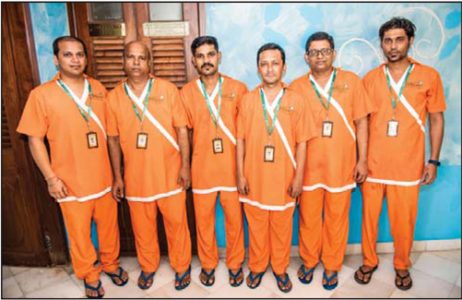
Dr. Hemang Parekh is Ayushakti’s chief medical officer, in charge of 40 doctors and the attendant staff of some 500 people across all their clinics. He graduated in 1995 with a degree in ayurveda from Jamnagar University in Gujarat, considered one of the best in the world for the study of ayurveda. He joined Ayushakti in 2003, impressed by their pulse-reading skills and overall treatment of patients. In most of the medical world, he stated, doctors spend their time dealing with reports—blood tests, CT scans, sonograms, etc. But at Ayushakti the focus is on the person—and not just their body, but their mind and emotions as well. He lamented the fact that most people pay little attention to their health until they fall sick.
Each new doctor is put through a six-month training program and attends periodic seminars, one of which we witnessed during our stay. Therapists are put through a two-month course and must pass an exam upon completion. “Our CEO, Chiranjeev Shrivastava, has brought to Ayushakti the idea of detoxification. Whereas panchakarma is like getting your whole body serviced, detoxification is focused on specific body conditions and problems; it is results oriented. Every month about 2,000 people in India go through one of our detox programs.”
He concluded, “Ayurveda is well connected with spirituality. Before starting, we perform prayers so we can help people with their health problems. When we pick an herb, we pray to the plant. It is a very religious process. The spirit of spirituality is there in all our ayurveda practitioners and therapists.”
Therapists Sonu Narayan Patel and Smita Shivaji Desai are the heads, respectively, of the men’s and women’s panchakarma wings of Ayushakti. Every patient, they explained, wants to know how long it will take to recover from their problems. Women especially, Smita said, are anxious in this regard. The staff’s standard response is to focus on correcting one’s lifestyle, getting enough sleep every night, eating properly, keeping a positive mental outlook, and following their doctor’s advice and directions. “The biggest difference from other clinics,” one said, “ is that we treat the patients as part of our family and become close to them.” Each therapist is expected to be able to communicate in English.
One specialty of the clinic, they explained, is marma treatment, 107 points of the body that respond to pressure and/or massage and are the historical basis for the Chinese system of acupuncture. Marma therapy is especially useful for frozen shoulder, back pain and cervical problems. It was useful in Renu’s case to reduce excessive heat in the body. In other cases it is used to reduce blood pressure.
Dr. Rajshree Mehta, who guided most of our care, has been with Ayushakti for 27 years. She mentioned that many people who come to the clinic suffering from chronic disease do so as a last resort, when nothing else works. Most new patients already know something about ayurveda, but they don’t follow even the simplest of guidelines, such as to eat only when hungry. People feed themselves, hungry or not, because their life is “moving in tandem with the needle of the clock.” When we eat without being hungry, she explained, we are unable to digest the food properly, and this creates toxins in the body.
“It is part of our culture at Ayushakti to pray to God before we treat patients,” Rajshree informed us. “I first come and pray in the small shrine in my examination room. I pray to Lord Dhanvantri [the God of Healing].
Ashok Chavan, who has been with Ayushakti for about 12 years, is manager of the company’s Palghar plant. During our tour, he told us it is about 12,000 square feet, has 32 employees and produces 159 types of tablets from a multitude of ingredients, including 300 herbs. In a single day they can produce more than 100,000 tablets. Many of the formulations were developed personally by Dr. Smita Naram, who visits the plant regularly. Some products they sell in stores, others are available only through their own pharmacies.
There are multiple checks to avoid heavy metals, which have come under scrutiny recently in ayurvedic medicines. The United States Food and Drug Administration (FDA) maintains offices in India, which is the second largest supplier of pharmaceuticals and biologics to the US—and, somewhat surprisingly to me, the seventh largest supplier of food. Chavan tells us FDA inspectors have come twice to the Palghar plant, and both times it has passed.
Patient Interviews
We spoke with a number of clinic patients, both outpatients and those who, like us, were staying at the clinic. They were overall quite pleased with the treatment, but few allowed us to take their photos or quote them about their medical issues. Several with serious health problems had come to Ayushakti after all other medical options had failed for them. A few experienced miraculous recoveries, but most face a long, drawn-out process. Several video testimonials can be seen on the Ayushakti website: ayushakti.com/natural-arthritis-treatment.php
Sheila Seth, 56, a school administrator, was on the third day of a seven-day outpatient detox program for diabetes. When she started, she could not even lift her hand on account of the swelling and pain. By the third day she was already experiencing reduction in both. “I feel I should have come here much earlier. For me the results delivered in three days are no less than a miracle.”
Jag Prakash of Mauritius was staying full-time at the clinic. He was near the end of three weeks of treatment for Parkinson’s disease, caused not by old age, but by an accident five years ago. Extensive allopathic treatment in Mauritius had not improved his condition. As he could not communicate well with others, he had started to withdraw socially.
Prakash shared with me, “When I came here, my whole body would shake terribly. Now it is in control to a great extent, 50 to 60% improvement. They want me to stay three more weeks, but I am homesick for my grandchildren and want to go back to Mauritius. I will take the medicines given here for one year and then review my situation.”
Prakash’s wife, Lata, had come mostly to assist her husband, but was also getting treated for back pain and migraine headaches. She told us she is now “70% better, no longer suffering from headache, back pain reduced and a frozen shoulder problem also much better.” She said the doctors said if her husband would stay three more weeks, he could return with little shaking or trembling.
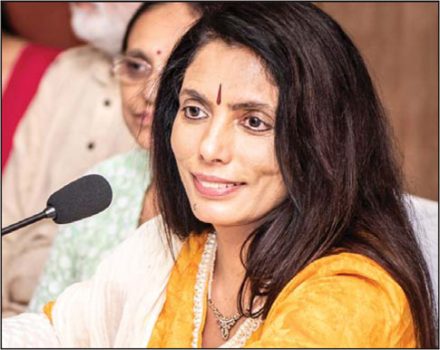
Conclusion
Almost every patient we spoke with at Ayushakti appreciated the way they were treated and given personal attention by the vaidyas. Most had received a pulse exam by Dr. Smita Naram and were happy with the diagnosis and recommended treatment. We did encounter some with serious health problems whose results did not meet their expectations. However, they realized that since they had come to Ayushakti as a last resort, only after exhausting all other options, it was perhaps unreasonable to expect miracles. When we raised this issue with the clinic doctors, they said in some cases recovery is indeed miraculous—Jag Prakash, for example, finally found some relief from his Parkinson’s after all allopathic methods proved ineffective. But in cases that have developed major complications, recovery can be slow.
Both Renu and I definitely improved on all fronts from the treatment. The most dramatic change form me was that my blood pressure returned to normal in the second week, which allowed me to stop taking the allopathic medicine I have used for years. Just through the treatments and ayurvedic herbal medicine, which has no side effects, the blood pressure stayed normal. Renu’s bleeding meant some therapies could not be given or not given as fully as normal. But that issue was resolved during the treatments. She lost weight, and the pain in her knees was greatly reduced. The biggest change for both of us was in our diet. We have dropped both wheat and sugar in favor of increased use of mung beans, fruits and vegetables. As a result, we feel healthier and more energetic.
After receiving treatment at Ayushakti and interacting with Dr. Smita Naram, I can definitely say that she is a master pulse reader, and has her finger on the pulse of ayurveda itself. Whether or not she achieves her life’s mission of treating a billion people, she is almost certainly one of those who is successfully adapting the ancient wisdom of ayurveda to our modern maladies in a manner that even mainstream allopathic medicine will ultimately have to acknowledge.
What Is–and Isn’t–Panchakarma
The traditional listing of panchakarma, literally, “five actions,” is vaman (induced vomiting), virechan (purgation with laxatives), basti (enemas with oils and herbs), nasya (cleansing via the nose) and raktamoshan (blood-letting). The objective of each is directly removing the doshas (vata, pitta and kapha) from the body. This is the traditional definition, the one generally used in India.
A set of purvakarma, “prior actions,” are usually done in preparation for the panchakarma treatments. Sometimes these are confused with panchakarma, partly because they may take more time to perform. Some purvakarmas begin even before leaving home, such as taking ghee and triphala daily, and eliminating non-vegetarian food, fried food, sweets, etc., all according to the ayurvedic doctor’s advance instructions.
Once the patient is at the clinic, more purvakarmas continue over several days. These most commonly involve application of oil by various techniques including massage (snehana) followed by the use of a steam box or steam bath (swedana). The objective of these prior treatments is to pull the toxic doshas into the digestive tract for elimination from the body through the panchakarma treatments. Oil massage and steam therapies may be done apart from panchakarma to address specific issues. For this reason also, some people get the mistaken impression they are part of panchakarma.
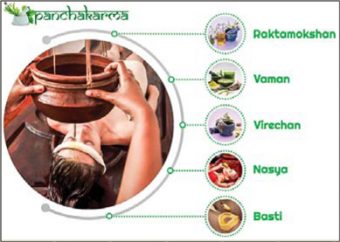
Panchakarma is usually followed by rasayana, rejuvenation therapy, both at the clinic and at home, which involve various techniques including herbal medications. Likely the most critical for lasting results is faithfully following the doctor’s recommendations for adjustments in attitude, diet and exercise.
In the West especially, one finds considerable variation in panchakarma. To begin with, induced vomiting and bloodletting can often only be done with approved medical supervision. (Before we dismiss bloodletting as the very definition of outdated medical practice, we should know that it has been shown to have unexpected benefits. For example, men who give regular blood donations show a reduced incidence of heart attack.)
Some Western practitioners without the necessary facilities for induced vomiting or enema have clients do those at home and only give oil massage and steam therapy in their clinics. This further strengthens the impression that these are elements of panchakarma. Likewise, shirodhara, the dripping of warm oil on the forehead—a favorite stock photo of ayurvedic medicine—is not part of panchakarma.
According to Dr. David Frawley of the American Institute of Vedic Studies, “Because of the complications and time involved, we find more scaled-down panchakarma therapies offered, particularly in the West. Some of these can be far from the traditional practice. That is why it is often best for people to go to India for a full panchakarma treatment. They should set aside at least two weeks, if not a month, for the therapy, and prepare for it in advance with the right dietary and herbal support practices before they leave for India.”
Keeping Check on the Pulse of Mumbai
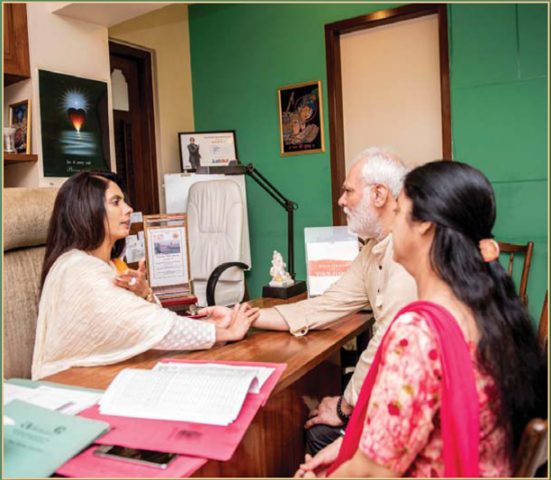
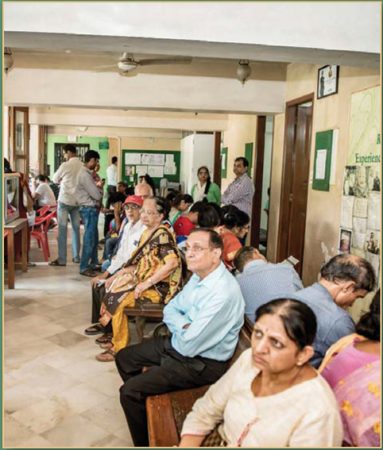

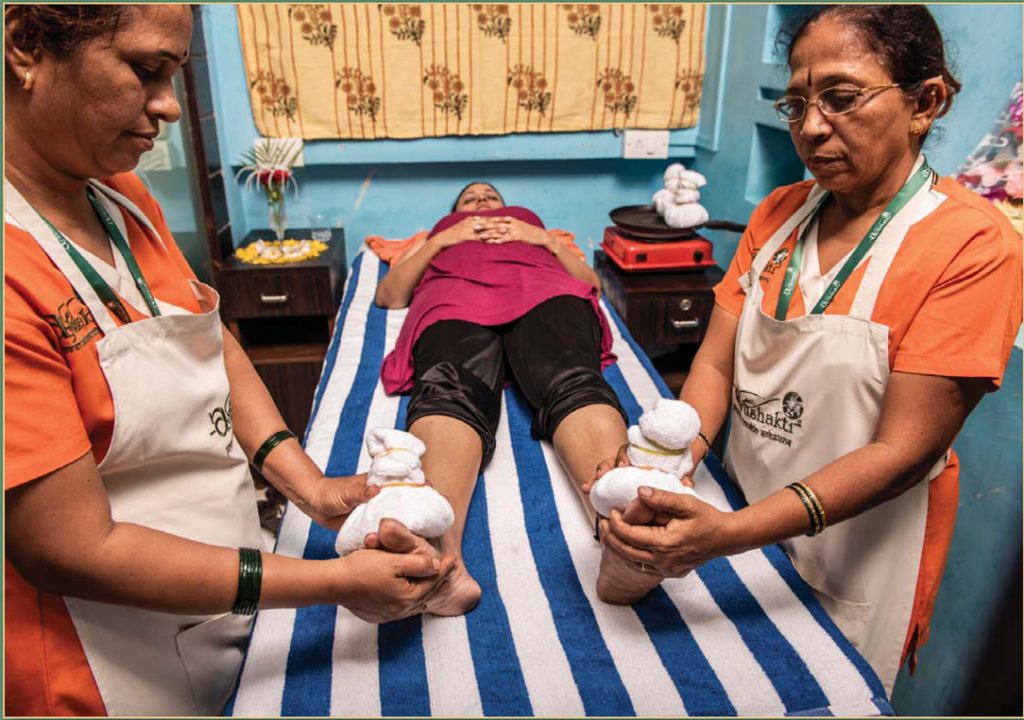
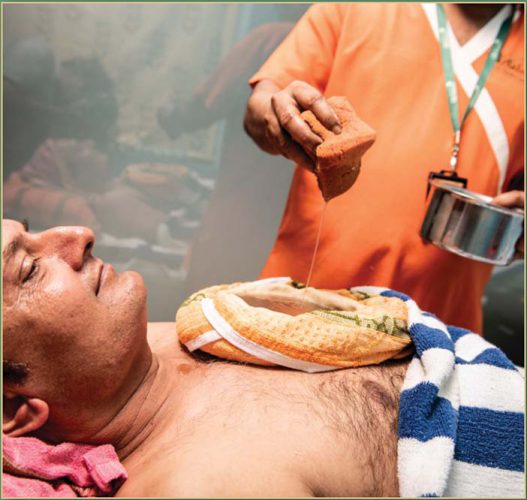
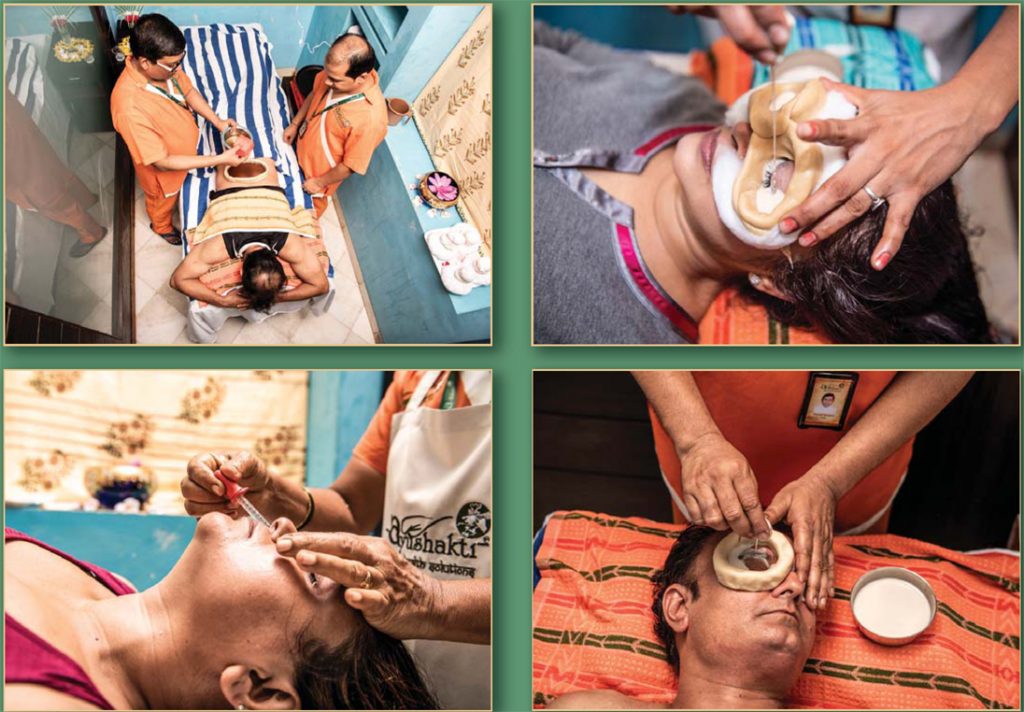
Relaxing Treatments and Tasty Food a Key Part of Therapy

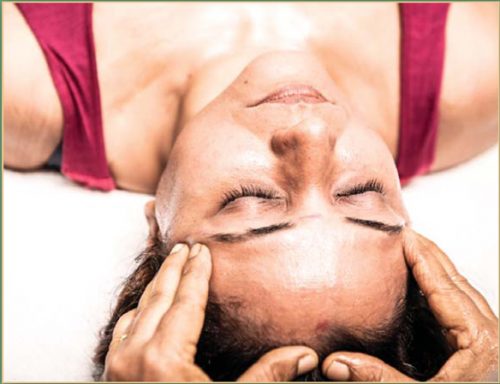
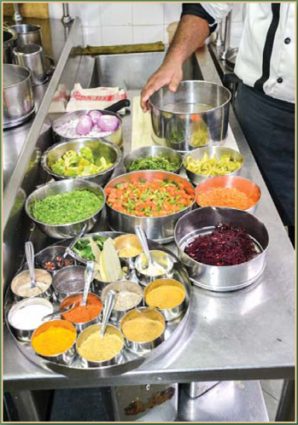

The Clinic’s Patients and Supporting Staff
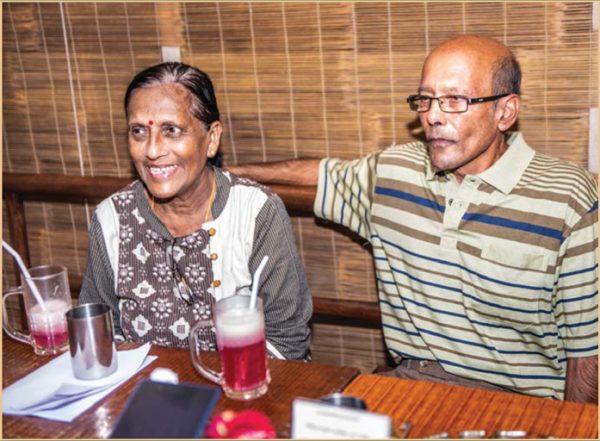
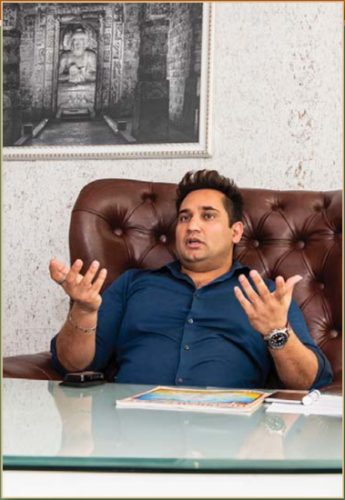
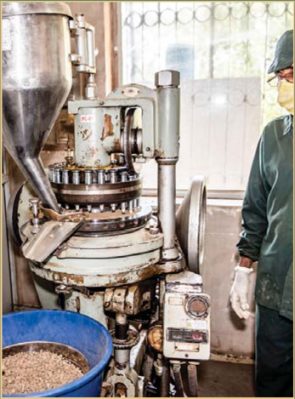
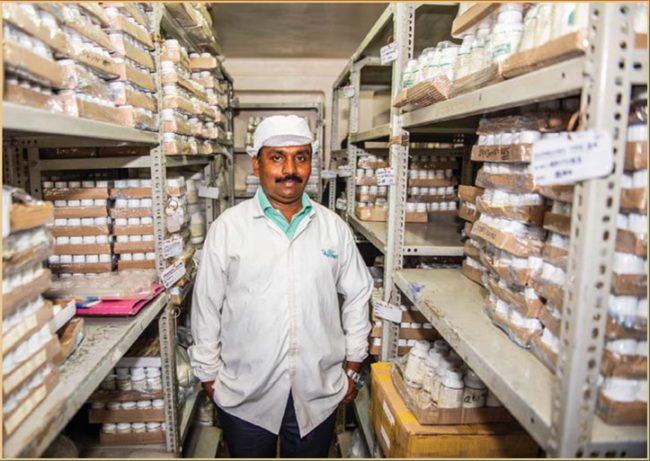
Pharmacy and Satisifed Patients
